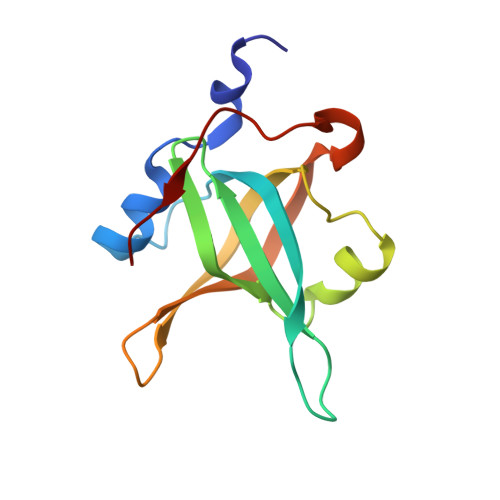Identification and Optimization of Anthranilic Acid Based Inhibitors of Replication Protein A.
Patrone, J.D., Pelz, N.F., Bates, B.S., Souza-Fagundes, E.M., Vangamudi, B., Camper, D.V., Kuznetsov, A.G., Browning, C.F., Feldkamp, M.D., Frank, A.O., Gilston, B.A., Olejniczak, E.T., Rossanese, O.W., Waterson, A.G., Chazin, W.J., Fesik, S.W.(2016) ChemMedChem 11: 893-899
- PubMed: 26748787
- DOI: https://doi.org/10.1002/cmdc.201500479
- Primary Citation of Related Structures:
5E7N - PubMed Abstract:
Replication protein A (RPA) is an essential single-stranded DNA (ssDNA)-binding protein that initiates the DNA damage response pathway through protein-protein interactions (PPIs) mediated by its 70N domain. The identification and use of chemical probes that can specifically disrupt these interactions is important for validating RPA as a cancer target. A high-throughput screen (HTS) to identify new chemical entities was conducted, and 90 hit compounds were identified. From these initial hits, an anthranilic acid based series was optimized by using a structure-guided iterative medicinal chemistry approach to yield a cell-penetrant compound that binds to RPA70N with an affinity of 812 nm. This compound, 2-(3- (N-(3,4-dichlorophenyl)sulfamoyl)-4-methylbenzamido)benzoic acid (20 c), is capable of inhibiting PPIs mediated by this domain.
Organizational Affiliation:
Department of Biochemistry, Vanderbilt University, Nashville, TN, 37232, USA.















